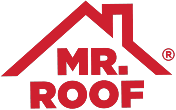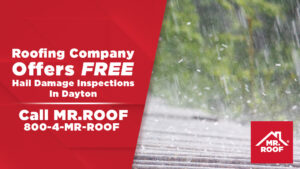Facing a steep tear off roofing bill that’s hundreds or even thousands of dollars higher than a simple overlay? You’re not alone. When it comes to replacing your aging roof, the decision between these two methods often boils down to immediate costs versus long-term value.
A roof overlay allows new shingles to be installed directly over existing ones, while a complete shingle tearoff removes all old materials down to the deck before installing a new roof. Though overlays can save you $50-$100 per square foot initially, they typically last only half as long as a proper tear-off. Additionally, many homeowners don’t realize that a full replacement can actually add over $10,000 to your home’s resale value – a fact that changes the equation significantly.
Whether you’re planning to sell soon or stay for decades, understanding the true costs and benefits of each approach is crucial to making the right investment in your home. This comprehensive guide breaks down everything you need to know about roof overlays versus tear-offs in 2025, so you can make a decision you won’t regret.
Understanding the Two Methods
Homeowners considering roof replacement face a critical decision that impacts both their immediate budget and long-term home value. Beyond simply installing a “new roof,” you must choose between two distinct methods: overlay or tear-off. Each approach offers different advantages depending on your specific situation and goals.
What is a Roof Overlay?
A roof overlay (sometimes called a “roof layover” or “roof recovery”) involves installing a new layer of roofing materials directly on top of your existing roof without removing the old materials. During this process, roofing contractors place new shingles over your current ones, creating a second layer of protection.
This method requires your roof’s structural support to be in good condition. Furthermore, building codes typically limit homes to a maximum of two layers of shingles, meaning an overlay can only be performed once in a roof’s lifetime. If your home already has two layers of roofing materials, an overlay is not an option.
It’s important to note that an overlay won’t address any underlying issues. Since the existing roof remains in place, problems with the sheathing, underlayment, or other components beneath the visible shingles stay untouched. Therefore, these materials must be in good shape before considering this approach.
What is a Roof Tear-Off?
A roof tear-off (also known as a “complete roof replacement”) involves removing all existing roofing materials down to the decking before installing an entirely new roof. Roofing contractors go section by section, literally tearing off the old shingles and components from the roof’s decking.
This comprehensive approach allows for a thorough inspection of the entire roofing structure. Any damaged sheathing, underlayment, or flashing can be identified and replaced, ensuring a solid foundation for your new roof. With a tear-off, every component is new, from the moisture barrier to the outer layer of shingles.
Unlike an overlay, a tear-off gives your home a completely fresh start with brand-new materials throughout the entire roofing system. This method addresses not just the visible surface but also the critical underlying structure that protects your home.
When is Each Method Typically Used?
Roof overlays are generally chosen in these situations:
- Budget constraints are primary concerns (overlays cost approximately 25% less than tear-offs)
- Time is limited (overlay projects can be completed about 25% faster)
- The existing roof has only one layer of shingles and is structurally sound
- The current roof appears worn externally but has reliable sheathing and underlying structure
- Short-term solutions are acceptable or the property will be sold/redeveloped soon
Roof tear-offs are typically recommended when:
- Your roof already has two layers of shingles (the maximum allowed by most building codes)
- Structural issues are present or suspected
- The roof deck needs inspection for damage like leaks, rot, or mold
- You’re switching to different roofing materials (such as from asphalt to metal)
- Maximizing home resale value is important
- Long-term durability and performance are priorities
The decision ultimately depends on your specific circumstances, including your budget, timeline, the current condition of your roof, and your future plans for the property. Nevertheless, most roofing experts recommend tear-offs as the better, more sustainable option whenever possible.
Understanding these fundamental differences is essential for making an informed decision about your roof replacement project, balancing immediate costs against long-term value.
Cost Breakdown: Overlay vs Tear-Off in 2025
The financial implications of roof replacement go beyond just the upfront price tag. When comparing roof overlay with tear off roofing, understanding the complete cost breakdown helps you make an informed decision that balances your immediate budget against long-term value.
Average Cost per Square Foot: $250–$350 vs $300–$450
The price difference between these two roofing methods is substantial. A roof overlay typically costs approximately 25% less than a complete tear-off. In practical terms, tear off roofing projects range from $1.20 to $4.00 per square foot], accounting for materials, labor, and disposal fees.
This cost gap exists primarily because overlays require significantly less labor and eliminate disposal expenses. For an average home, this difference can translate to savings of about $1,000 or more when choosing an overlay versus a complete tear-off. However, these initial savings must be weighed against long-term considerations.
Labor and Disposal Costs Compared
Labor represents the largest cost component in roofing projects, and this is where the methods diverge significantly. Tear-offs demand considerably more work hours because contractors must:
- Remove all existing roofing materials down to the deck
- Inspect and potentially replace damaged decking
- Prepare the surface for new materials
- Install the new roofing system
Consequently, labor costs for tear-offs are substantially higher. Additionally, disposal expenses add another layer of cost that overlay projects avoid entirely. With tear-offs, contractors must collect, transport, and properly dispose of old materials, often requiring dumpster rentals and managing waste removal logistics.
Permit and Dumpster Fees
These often-overlooked expenses can add hundreds to your project total. Roofing permits typically cost a couple hundred dollars, depending on your location. Most contractors handle the paperwork but don’t always include this fee in their initial quote.
For tear-offs, dumpster rental permits represent another potential expense. These permits typically range from $10 to $100 per week, with costs varying significantly based on municipality regulations. Some areas charge as little as $5, while high-cost regions may exceed $100.
The dumpster itself is another consideration. While many roofing companies include this in their overall price, it’s worth confirming whether disposal costs are bundled or separate in your estimate.
Hidden Costs in Overlay Projects
Despite the lower initial price tag, overlays can harbor unexpected expenses that emerge later:
- Structural Issues: Problems with the roof deck or framing may remain undiscovered until they cause serious damage
- Water Damage: Moisture trapped under the existing roof can lead to rot and decay, requiring costly remediation later
- Ventilation Problems: Poor ventilation beneath multiple layers can reduce roof lifespan and energy efficiency
- Future Tear-Off Costs: When an eventual tear-off becomes necessary, removing two layers costs more than removing one
Furthermore, many contractors use “foot in the door” pricing—quoting low initially, then increasing the final bill with unexpected charges once work begins. Always request detailed, itemized estimates and clarify what’s included before proceeding.
In essence, while overlays offer immediate savings (approximately 25% less expensive), the complete cost picture must account for both visible and hidden expenses. Tear-offs, though costlier upfront, often provide better long-term value by addressing underlying issues and extending roof lifespan.
Pros and Cons of Each Method
Making an informed roofing decision requires weighing both immediate benefits and long-term implications of each method. Let’s examine what makes each approach appealing—and what potential drawbacks you should consider.
Overlay Pros: Speed, Cost, Simplicity
Choosing a roof overlay offers several immediate advantages. First, installation speed stands out as a primary benefit—overlay projects typically finish about 25% faster than complete tear-offs. This rapid timeline means less disruption to your daily routine and quicker protection for your home.
Cost savings represent another compelling reason homeowners choose overlays. This approach typically costs approximately 25% less than a complete tear-off, primarily because it eliminates labor-intensive removal and disposal expenses.
Moreover, the simplicity of an overlay appeals to many homeowners. The straightforward process requires less preparation, creates minimal mess, and offers an instant refresh to your home’s appearance without the extensive work of a complete replacement.
Overlay Cons: Shorter Lifespan, Structural Risks
Despite initial advantages, overlays come with significant drawbacks. Most notably, an overlay roof typically lasts only about 16 years compared to the 20-30 year lifespan of a new tear-off installation. This shortened durability stems from trapped heat and moisture between layers.
The additional weight presents another serious concern. An overlay essentially doubles the roofing material on your home, potentially stressing the structural integrity of older or already-compromised roofs. In regions with heavy snowfall, this extra weight becomes particularly problematic.
Furthermore, overlays mask rather than solve underlying problems. Any existing issues—from rotten decking to hidden leaks—remain unaddressed beneath the new layer, potentially leading to costlier repairs in the future.
Tear-Off Pros: Durability, Full Inspection
Tear-off roofing delivers superior longevity, with properly installed new roofs lasting 20-30 years with proper maintenance. This extended lifespan results from starting fresh with all-new materials.
Certainly, one of the greatest advantages is the opportunity for complete inspection. By removing all existing materials, contractors can identify and address underlying issues like rot, water damage, or structural weaknesses. This thorough approach ensures your new roof rests on a solid foundation.
Additionally, most manufacturers offer full warranty coverage only for tear-off installations. Many warranties become void if shingles are installed over existing layers, potentially leaving you without protection for material defects.
Tear-Off Cons: Higher Cost, More Disruption
The primary drawback of tear-off roofing is higher upfront cost. Complete replacements typically cost between $1.20 and $4.00 per square foot more than overlays, representing a significant investment.
In addition, the extended timeline creates more disruption to your household. Tear-offs generally take several days longer than overlays, with noise, debris, and contractor presence throughout the project duration.
Lastly, waste disposal adds both environmental impact and expense. The removal process generates substantial waste requiring disposal fees, dumpster rentals, and proper handling—costs that overlays avoid entirely.
Impact on Home Value and Longevity
Beyond immediate costs, your roofing choice substantially impacts your home’s long-term value and performance. Understanding these lasting implications helps justify the investment in a quality roof installation.
Resale Value: Tear-Off Adds $10K+
A complete tear off roofing project significantly boosts your home’s market appeal. According to industry data, a new roof can add between $12,000 and $15,000 to your home’s resale value, with some realtors estimating additions exceeding $10,000. This substantial return makes tear-offs particularly attractive for homeowners planning to sell. Indeed, the 2023 Cost vs Value report indicates that roof replacements add an average resale value of $17,807, representing a 60-70% return on investment.
Roof Lifespan: 16 Years vs 30 Years
The lifespan difference between these methods is striking. Roof overlays typically last around 16 years, whereas properly installed tear off roofing with new materials can protect your home for 20-30 years. This nearly doubled lifespan stems from several factors: heat gets trapped between multiple shingle layers in overlays, accelerating deterioration; underlying problems remain unaddressed; and new materials perform better on a clean foundation.
Warranty Considerations for Each Method
Warranty coverage varies significantly between these approaches. Many manufacturers provide full warranty protection only for complete tear-offs, as underlying problems can void coverage for overlays. Accordingly, this transferable warranty becomes a valuable selling point when marketing your home. First thing to remember is that while material warranties might seem identical on paper, installation method can impact their practical application and coverage period.
Visual Appeal and Curb Value
Your roof comprises up to 40% of your home’s visible exterior, making its appearance crucial for property valuation. New roofs provide a polished, well-maintained look that creates positive first impressions with prospective buyers. In contrast, roofs with overlay installations often appear uneven in certain areas, lacking the clean, consistent appearance of a complete replacement. Furthermore, an appealing roof color properly matched to your home’s exterior can tie together design elements and substantially enhance curb appeal.
When to Choose Overlay or Tear-Off
Deciding between roof overlay and tear off roofing hinges on several critical factors that vary for each homeowner’s unique situation.
Structural Load Limits and Building Codes
Most building codes limit homes to a maximum of two layers of roofing materials. Prior to choosing an overlay, consult with a qualified contractor to evaluate whether your home’s structure can safely support the additional weight. This is especially important for older homes or those in regions with heavy snowfall, as the extra weight (approximately one layer of shingles) puts significant stress on your roof structure. Warning signs of an overloaded roof include a sagging roof deck, cracks in ceilings or walls, and unusual creaking sounds. Given that building codes typically prohibit more than two layers, homes with existing overlay installations automatically require a complete tear off roofing project.
Roof Condition: Curling, Leaks, or Mold
Specifically examine your existing roof for tell-tale damage indicators. Curling shingles signal water absorption or hot attic air damage, making your roof vulnerable to leaks. Similarly, water stains on ceilings, visible mold growth, or soft spots in your roof deck necessitate a tear-off, as these issues must be addressed at the structural level. Damaged flashing around chimneys and vents or signs of roof rot require thorough inspection that only tear-offs provide. Under these circumstances, overlays merely mask underlying problems, potentially leading to costlier repairs later.
Time Constraints and Weather Considerations
Roof overlays typically complete 25% faster than tear-offs, making them suitable for urgent situations. Even more importantly, consider seasonal timing—tear-offs expose your home to the elements briefly, requiring clear weather forecasts. Meanwhile, overlay projects can often proceed in less-than-ideal conditions. Alternatively, rushing roof decisions frequently leads to poor contractor selection and quality issues.
Future Plans: Selling vs Long-Term Stay
Homeowners planning to sell within a few years might prioritize overlay’s lower upfront costs. Although tear-offs add approximately $10,000+ to home value, short-term owners may not recoup this investment. Primarily, long-term residents benefit from tear-offs’ extended lifespan (30 years versus overlay’s 16 years) and comprehensive warranty protection. Your decision ultimately depends on balancing immediate budget constraints against future performance expectations.
Conclusion
The Final Verdict: Balancing Today’s Budget with Tomorrow’s Value
Choosing between a roof overlay and a complete tear-off ultimately comes down to balancing immediate savings against long-term benefits. Though overlays offer a tempting 25% cost reduction and faster completion, their shorter 16-year lifespan makes them less economical over time. Additionally, building code restrictions limiting homes to two layers of roofing mean overlays represent only a temporary solution.
Complete tear-offs, despite higher upfront costs, deliver substantially better returns through extended 20-30 year lifespans and significant home value increases exceeding $10,000. This approach also eliminates hidden problems that overlays merely conceal. Homeowners planning to stay put for years benefit most from tear-offs, while those selling soon might justify an overlay’s lower initial investment.
Your roof represents both your home’s first line of defense and a major financial asset. Therefore, this decision deserves careful consideration beyond simple price comparisons. Weather conditions, structural integrity, existing damage, and future plans all factor into making the right choice. Trusted roofing professionals can help assess your specific situation, providing guidance tailored to your home’s unique needs.
Regardless of which method you select, quality materials and expert installation remain essential for maximizing your investment’s performance. The right decision today will protect your home and finances for decades to come.







